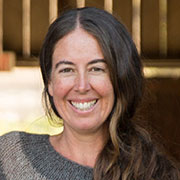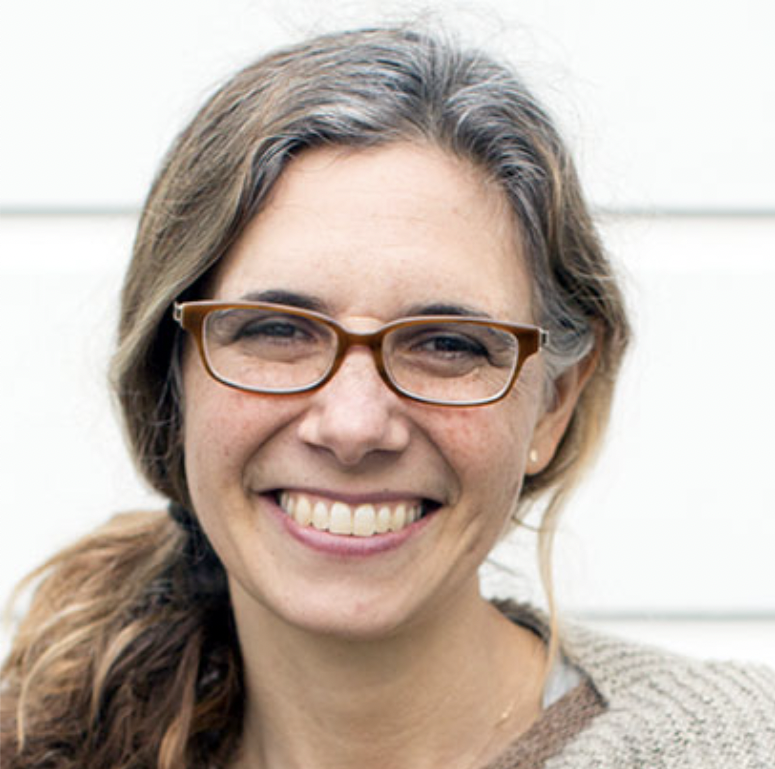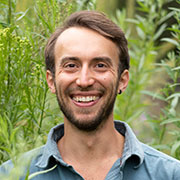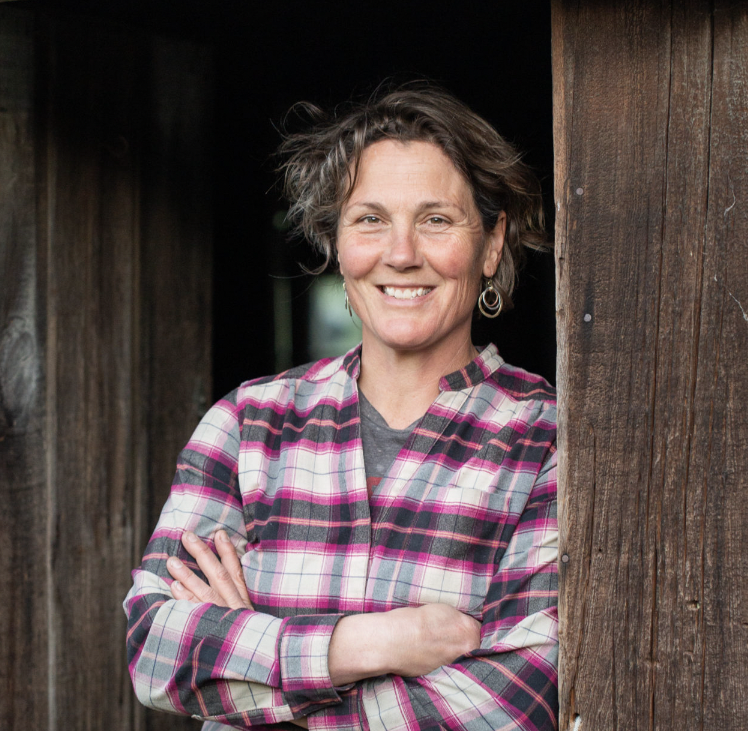
As 2022 winds to a close, we’re reflecting on all of the progress — big and small — made within the Fibershed community and beyond. We recognize these ripples of change are created by people throughout the world prioritizing the health of their communities and the planet, and we’re abundantly grateful.
Below, the Fibershed team shares their reflections on the past year and what they hope to see in the year ahead.
As you look back on 2022, what has happened in relation to Fibershed’s work and mission that made you most excited?
Rebecca Burgess, Executive Director:

The awareness level of the planetary and personal implications of plastic clothing is hitting historic proportions. This awareness level has been a long time coming, and I hope it will bring attention to the sheer volume of overproduction that is a consequence of having access to this much-fossilized carbon. Natural fiber systems — due to their ability to regenerate based on 12-month cycles — are annually producing fresh carbon sources for our wardrobes. By virtue of these fibers being biosphere-based, they provide the opportunity and constraint of having to be grown within the defined ecological carrying capacity of our landscapes. Further refining our understanding and coming into harmony with ‘carrying capacity’ is the ultimate question for our fiber (food, fuel, and other material culture) systems.
Sarah Keiser, Intersectional Land Stewardship and Community Grazing Initiatives Coordinator:

What makes me most excited about Fibershed’s work is the deepening connection of community. More people are attached to each other and the land we tend. I feel blessed to witness this shift in collaborative land stewardship.
Heather Podoll, Partnership & Advocacy Coordinator:

I was grateful to be able to spend time in community again at in-person events like the farmers’ markets, meet-ups, and workshops at the Fibershed Learning Center. From a textile policy perspective, there were exciting strides forward this year regarding management of waste, toxins, and microplastics associated with textiles. California passed model new legislation SB 1187 (pilot projects for textile waste recovery and management) and AB 1817 (ban on use of toxic PFAS chemicals in textiles), and also finalized a Statewide Microplastics Strategy that includes crucial recommendations to address synthetic textiles as a key source of microplastic pollution.
This progress in state policy would not have been possible without a really engaged public response. I was especially excited about the response that our Fibershed community had to the Statewide Microplastics Strategy comment process — 63 comment letters submitted with more than 80 signatories. This had a huge impact on getting a focus on synthetic textiles included in the final recommendations.
Mike Conover, Climate Beneficial™ Technician:

I’m most excited about our Partnerships for Climate-Smart Commodities grant from the USDA. This year Fibershed and our partnering organizations (NCAT, Seed2Shirt, Colorado State University, the Carbon Cycle Institute, and New York Textile Lab) applied for and were awarded $30 million to scale the Climate Beneficial Agriculture program in four regions throughout the U.S. over the next five years.
The project will focus on cotton and wool producers in nine states and will expand regional capacity for carbon farm planning and technical assistance, as well as provide direct financial incentives to producers for carbon farming practices. More generally, the fact that the USDA awarded $3.1 billion towards projects that demonstrate climate-smart agriculture is extremely encouraging.
Lexi Fujii, Membership & Learning Center Coordinator:

Throughout 2022, I had the honor of connecting more deeply with our Fibershed Affiliate Network — an inspiring group of grassroots organizers around the world working to build their own regional natural fiber textile systems and communities. These organizers work tirelessly, often volunteering their time, to rebuild local supply chains rooted in soil regeneration while uplifting fiber farmers and collaborating with designers, artisans, and brands. They’re hosting textile-based skill building workshops with their direct community; creating entirely local and natural clothing and textiles; advocating for soil-to-soil economies with their policymakers; researching new production and processing pathways; building supply chains to connect the farmer to the maker and the consumer. They are helping to build the foundation of thriving textile systems and cultures around the world, specific to their region and people, with the values of collaboration, regeneration, and resiliency.
Looking forward to 2023, what do you hope Fibershed and its community are able to accomplish in the next year?
Rebecca Burgess, Executive Director:
 I would like to see increased awareness that we need milling infrastructure in multiple bioregions within the U.S., leading to public and private investments in regional value add systems. My hope is we continue to focus on the core questions that bind us together as humans and that carry us forward into a collective vision for our clothing. No one wants to see the proliferation of more plastic, let’s all agree we can wind that dependency down to a small volume of clothing required by those whose outdoor livelihoods absolutely depend on staying dry. I see a future where we work together across the farm-mill-wearer world, to develop and sustain value added infrastructure to make our natural fibers more available. I would like to see a peace and a truce between plant and animal based fiber advocacy– we have enough in common to work together on re-envisioning manufacturing and the real mechanical realities of making natural fiber accessible for all.
I would like to see increased awareness that we need milling infrastructure in multiple bioregions within the U.S., leading to public and private investments in regional value add systems. My hope is we continue to focus on the core questions that bind us together as humans and that carry us forward into a collective vision for our clothing. No one wants to see the proliferation of more plastic, let’s all agree we can wind that dependency down to a small volume of clothing required by those whose outdoor livelihoods absolutely depend on staying dry. I see a future where we work together across the farm-mill-wearer world, to develop and sustain value added infrastructure to make our natural fibers more available. I would like to see a peace and a truce between plant and animal based fiber advocacy– we have enough in common to work together on re-envisioning manufacturing and the real mechanical realities of making natural fiber accessible for all.
Sarah Keiser, Intersectional Land Stewardship and Community Grazing Initiatives Coordinator:
 My wishlist is the development of a more holistic approach to local food and fiber systems. Ways forward that incorporate people, animals and the land in a healing stewardship of each other.
My wishlist is the development of a more holistic approach to local food and fiber systems. Ways forward that incorporate people, animals and the land in a healing stewardship of each other.
Heather Podoll, Partnership & Advocacy Coordinator:
 I hope we will continue to see growing awareness in policy, industry, and community conversations about the value of healthy, regionally-based, natural fiber textile systems. The potential for regional issues and work to impact national and international policy is very potent right now. In the coming year, I look forward to seeing growth of regional processing infrastructure, support for carbon farming-based fiber production, and deep engagement in regional efforts for equity and justice. We need all of these to inform and uplift national and international conversations about how the textile and clothing industry can change its course.
I hope we will continue to see growing awareness in policy, industry, and community conversations about the value of healthy, regionally-based, natural fiber textile systems. The potential for regional issues and work to impact national and international policy is very potent right now. In the coming year, I look forward to seeing growth of regional processing infrastructure, support for carbon farming-based fiber production, and deep engagement in regional efforts for equity and justice. We need all of these to inform and uplift national and international conversations about how the textile and clothing industry can change its course.
Mike Conover, Climate Beneficial™ Technician:
 I look forward to working more with producers to support them in implementing carbon farming practices and will continue to deepen my understanding of the practices, as well as the state and federal funding opportunities available to producers so I can be a better resource. I also look forward to getting the USDA grant project off to a great start to start scaling this work across the country.
I look forward to working more with producers to support them in implementing carbon farming practices and will continue to deepen my understanding of the practices, as well as the state and federal funding opportunities available to producers so I can be a better resource. I also look forward to getting the USDA grant project off to a great start to start scaling this work across the country.
We’ll also be finishing a different grant project through the NRCS called a Conservation Innovation Grant where we’ve developed a methodology for verifying sheep grazing in vineyard systems to underpin what we’re calling a Fibershed Ecosystem Grazing Credit. This will create a way for people to directly fund the community and ecosystem benefitting work of contract grazers in California. We’ll be launching that in 2023 as well.
Lexi Fujii, Membership & Learning Center Coordinator:
 I hope we can develop and increase access to natural fiber materials to local micro/small-scale designers in more urban spaces and open up opportunities for people to deeply and positively connect to the material that is being produced across our landscape in a way that benefits our climate; and to inspire the creation of beauty and storytelling through garments that can be felt emotionally, spiritually, aesthetically, and physically. The designers in our community are passionate, energized, and have such a beautiful vision for the future, I want to see their work uplifted and upheld.
I hope we can develop and increase access to natural fiber materials to local micro/small-scale designers in more urban spaces and open up opportunities for people to deeply and positively connect to the material that is being produced across our landscape in a way that benefits our climate; and to inspire the creation of beauty and storytelling through garments that can be felt emotionally, spiritually, aesthetically, and physically. The designers in our community are passionate, energized, and have such a beautiful vision for the future, I want to see their work uplifted and upheld.
